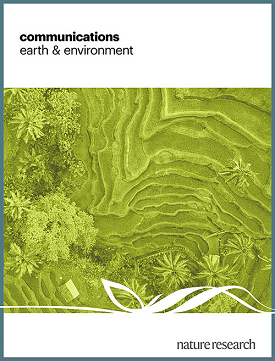A decade of declines in toothed whale densities following the Deepwater Horizon oil spill
IF 8.1
1区 地球科学
Q1 ENVIRONMENTAL SCIENCES
引用次数: 0
Abstract
Shortly after the Deepwater Horizon oil spill began in April 2010, a widely spaced passive acoustic monitoring array was deployed in the northeastern Gulf of Mexico to document the impacts of this unprecedentedly large and deep offshore oil spill on oceanic marine mammals. The array was subsequently maintained for over a decade. Here we document decadal density declines for seven of eight monitored species groups, including sperm whales (up to 31%), beaked whales (up to 83%), and small delphinids (up to 43%). Declines were observed both within and outside of the surface oil footprint. Though not conclusively linked to the oil spill, the broad spatial and temporal scale of these declines observed for disparate marine mammal species is consistent with Deepwater Horizon impacts. These declines have exceeded and outlasted post-spill damage assessment predictions, suggesting that the offshore ecosystem impacts of Deepwater Horizon may have been larger than previously thought. Whale and delphinid numbers in the Gulf of Mexico have declined by up to 83% in the ten years following the Deepwater Horizon oil spill, according to analysis of passive acoustic monitoring data.

在深水地平线石油泄漏后,齿鲸密度下降了十年
2010年4月,深水地平线漏油事件发生后不久,在墨西哥湾东北部部署了一个广泛间隔的被动声学监测阵列,以记录这次前所未有的大规模深海石油泄漏对海洋哺乳动物的影响。该阵列随后被维护了十多年。在这里,我们记录了8个监测物种群中的7个物种的年代际密度下降,包括抹香鲸(高达31%),喙鲸(高达83%)和小海豚(高达43%)。在地表石油足迹的内部和外部都观察到下降。虽然与石油泄漏没有决定性的联系,但在不同的海洋哺乳动物物种中观察到的这些下降的广泛空间和时间尺度与深水地平线的影响是一致的。这些下降已经超过并持续了泄漏后的损害评估预测,这表明深水地平线对近海生态系统的影响可能比之前想象的要大。根据被动声学监测数据的分析,在深水地平线漏油事件发生后的十年里,墨西哥湾的鲸鱼和海豚数量下降了83%。
本文章由计算机程序翻译,如有差异,请以英文原文为准。
求助全文
约1分钟内获得全文
求助全文
来源期刊

Communications Earth & Environment
Earth and Planetary Sciences-General Earth and Planetary Sciences
CiteScore
8.60
自引率
2.50%
发文量
269
审稿时长
26 weeks
期刊介绍:
Communications Earth & Environment is an open access journal from Nature Portfolio publishing high-quality research, reviews and commentary in all areas of the Earth, environmental and planetary sciences. Research papers published by the journal represent significant advances that bring new insight to a specialized area in Earth science, planetary science or environmental science.
Communications Earth & Environment has a 2-year impact factor of 7.9 (2022 Journal Citation Reports®). Articles published in the journal in 2022 were downloaded 1,412,858 times. Median time from submission to the first editorial decision is 8 days.
 求助内容:
求助内容: 应助结果提醒方式:
应助结果提醒方式:


